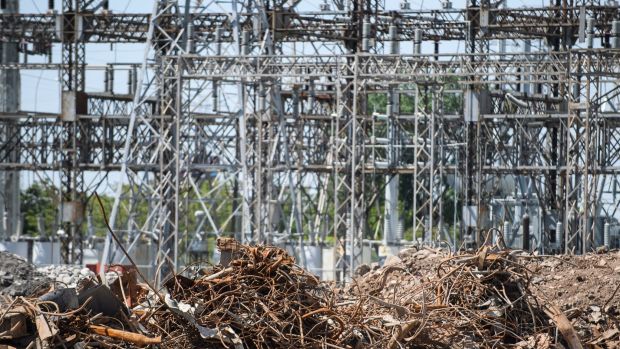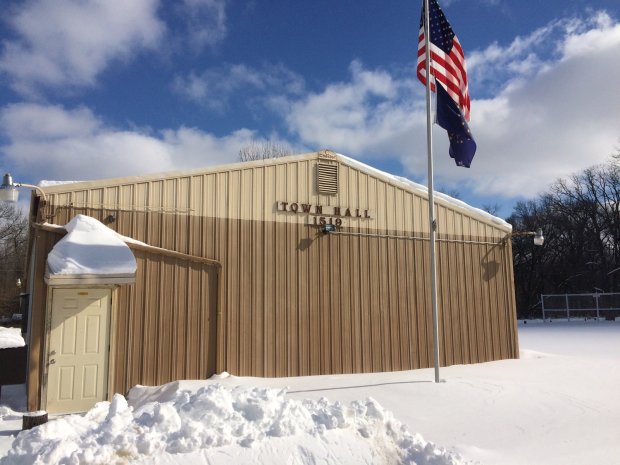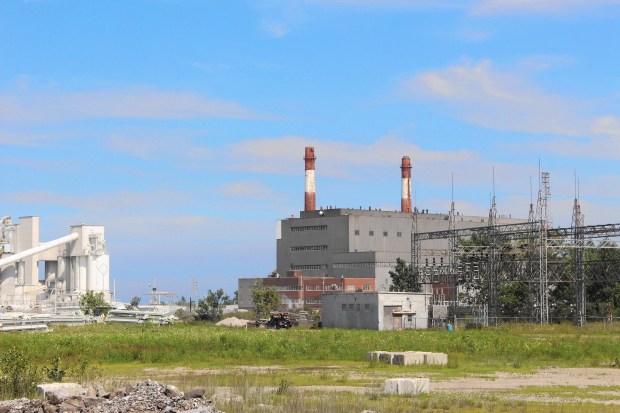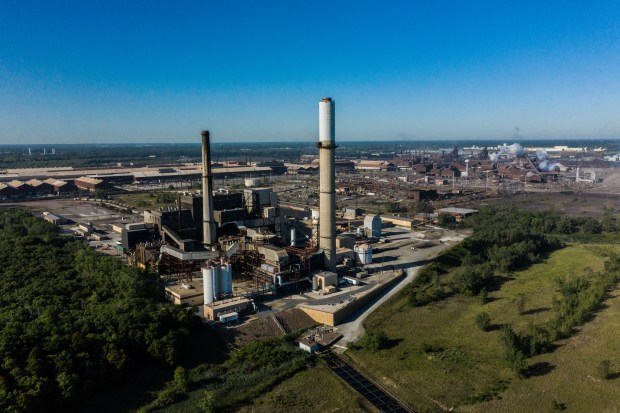Millions of tons of coal ash, the residue of coal after it’s been burned, sit near current and former power plants around Indiana, including Northwest Indiana.
Utilities that already required to clean up many of their coal ash sites will need soon to come up with ways to keep older coal ash sites, as well as ones not in approved landfills, from contaminating the air and water around them.
The U.S. Environmental Protection Agency recently made changes in its 2015 Coal Combustion Residuals Rule to regulate coal ash sites that formerly were exempt from the EPA’s cleanup rule.
The Cleveland Cliffs steel mill and permanently closed Bailly Generating plant, left, in Burns Harbor seen from the Indiana Dunes National Park in this August 2019 file photo. (Zbigniew Bzdak / Chicago Tribune)
The EPA’s action, which will take effect in six months, “closed loopholes in regulations so more coal ash will be cleaned up,” the Hoosier Environmental Council said in a news release.
“When it is poorly disposed of, coal ash is a threat to public health and to water supplies,” HEC added. “If it is open to the wind, it is a breathing hazard. If it comes in contact with water, it will contaminate the water with toxic heavy metals.”
Coal ash sites at the former Dean H. Mitchell generating station in Gary and the former State Line generating plant in Hammond will be included in the new rule.

Piles of scrap sit on the location of the demolished State Line coal-powered generating plant in Hammond where a data center was built in this 2018 file photo. (Kyle Telechan/Post-Tribune)
So will coal ash that’s not in approved landfills at the Northern Indiana Public Service Co.’s Michigan City generating station and R.M. Schahfer generating station, in Wheatfield.
Just Transition Northwest Indiana, which has been campaigning for a complete cleanup of the coal ash at the Michigan City generating station, celebrated the EPA’s decision.
“My community of Michigan City, Indiana has been waiting years for this day,” Just Transition NWI Executive Director Ashley Williams said in a news release.

The organization “was founded with the mission of ensuring the removal of these exemptions that made our struggle for clean air and water invisible to the law,” she said.
NIPSCO spokeswoman Tara McElmurry said the utility has excavated coal ash ponds at the Michigan City plant and filled them with clean soil.
But Just Transition NWI contends that, before those ponds were built, coal ash was dumped into and mixed with the sand and soil at the plant, and that it potentially endangers the adjacent Lake Michigan.

The first Michigan City generating station was built decades before environmental regulations or the EPA existed.
“Two million tons (of coal ash) are sitting on Lake Michigan, held onto the shoreline by an aging, corroded steel wall,” said Susan Thomas, Just Transition NWI’s legislative and policy director and press secretary. “We continue to call this a ticking time bomb. I think this needs to be addressed immediately.”
McElmurry said NIPSCO is reviewing the new EPA rule “to determine all potential impacts to NIPSCO. We are committed to complying with all federal and state regulations.”

The now-demolished Dean Mitchell Electic Generating Station in Buffington Harbor in Gary, pictured in this 2016 file photo, is one of several sites impacted by an EPA rule guiding coal ash. (Post-Tribune staff photo)
The new rule also covers coal ash at six former generating stations in Indiana, including two in Northwest Indiana.
NIPSCO built the Mitchell generating station in 1955, took it off-line in 2001, and began demolishing it in 2016. The land sits off Clark Road north of Gary/Chicago International Airport and has three coal ash sites.
The State Line Generating Facility, just east of the Illinois border along the Hammond lakefront, was owned by Southern Co. and provided electricity to Illinois’ Commonwealth Edison before it was closed in 2012. The former generating station is now occupied by Digital Crossroad, a data center.
The coal ash pond at NIPSCO’s former Bailly generating station in Porter County, next to the Cleveland-Cliffs steel plant and the Indiana Dunes National Lakeshore, has been undergoing an EPA-supervised cleanup for several years.
The current Michigan City and Schahfer generating stations are among 10 around the state with coal ash landfills that fall under the new regulations.
Most of the Indiana’s coal ash sites sit in the Lake Michigan watershed or along one of the state’s rivers.
“Coal ash contains toxic heavy metals, so when it gets wet it contaminates the water,” the Hoosier Environmental Council said.
Contaminants include molybdenum, lithium, boron, arsenic, sulfate, cobalt, antimony, radium, lead, selenium and thallium.
Residents of the town of Pines, just west of Michigan City, have been contending with coal ash contamination in their water for years.
More than 20 years ago, residents found that their wells were contaminated by coal ash leaching from the nearby Yard 520 landfill, which had been filled with more than a million tons of NIPSCO coal ash. Coal ash also had been used as a road base in the town.
The EPA declared the area a Superfund site, which made federal money available to extend Michigan City water lines into the town.
Thomas, of Just Transition NWI, said the EPA conducted a meeting in Michigan City just last month, “reintroducing themselves to the town of Pines.”
She said 38 homes there are still waiting to get municipal water service and are relying on bottled water.
“Folks in Pines are sick and tired,” Thomas said. “It’s been a terrible situation.”
Tim Zorn is a freelance reporter for the Post-Tribune.





